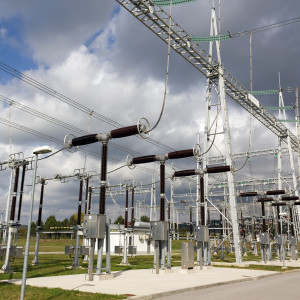America’s electric grid is the lifeblood of our economy, the circulatory system that is essential to our work and protecting families. And our adversaries are poised to infect it.
While cyber-attacks that steal credit card information or hacks into celebrities’ computers get far more media attention, electric grid attacks are far more ominous. And, as numerous senior government officials have pointed out, this can be easily done by Russia, China and many others.
Such attacks would burn out generators and eviscerate electricity routing programs. Recovery could take weeks or months. And it is not just household electricity that would go. Cell towers and water systems would be disabled as well.
Lloyd’s of London has calculated that the damage to the U.S. economy from a concerted electric grid cyber-attack could be more than $1 trillion. The effects would include, “a rise in mortality rates as health and safety systems fail; a decline in trade as ports shut down; disruption to water supplies as electric pumps fail and chaos to transport networks as infrastructure collapses.”
There has been continuing and important progress to make America’s grid safer. On June 20, the Federal Energy Regulatory Commission strengthened the reporting requirements for cyber-attacks, so that even quite early-stage events are now reported.
As FERC Chairman Neil Chatterjee said in making the announcement, “Defending our nation’s electric grid against cybersecurity threats is one of the commission’s most pressing challenges.”
The Department of Energy has also undertaken far-ranging cyber protection drills. Importantly, the White House has also launched the first national cybersecurity strategy in 15 years.
There are three important principles to making sure America’s electric grid is protected from foreign adversaries.
—Identify and better understand the costs. Though estimates vary, the cost for cyber grid protection is in the tens of billions. These are spread between electric companies, state regulators and federal government agencies charged with protecting the public. These costs should be more clearly defined so that there is transparency on how they impact electric rates. Cyber protection costs may also be a factor is deciding what type of power-generating fuels should be used.
—Dig-in for the long-term. Like the Cold War, it will be a decades-long struggle to get the threat of electric grid cyber-attacks under control. All but unstoppable technology changes, including the rise of remote energy home monitoring and bi-directional energy flows (e.g., homeowners selling solar power to the grid) open more doors through which adversaries can storm through.
—National security issue. In conventional warfare, an often primary and initial target is an adversary’s electric system. Today, it is no longer necessary to do that with an air strike. Countries that in no way could penetrate our airspace now seek to damage us from the electric grid.
In addition to electric grid cyber-attacks, America must also gird for low probability but high-impact electromagnetic pulse (EMP) attacks. These de facto cyber-attacks unleash high-frequency electromagnetic waves that can decimate electrical systems and equipment. They can occur from above-ground nuclear detonations and on-the-ground attacks. And they can naturally happen from solar storms.
Just as the Defense Department has protected vital military installations from EMP, so too should steps be taken to protect the civilian electric grid. The administration has placed long overdue attention on this important issue. A March 26 Presidential Executive Order will ensure better cooperation among government agencies and more protection and security for civilians.
Protecting the electric grid is difficult, important business. And while some may see it as tedious, we should never forget that protecting the grid is important for protecting our quality of life.

